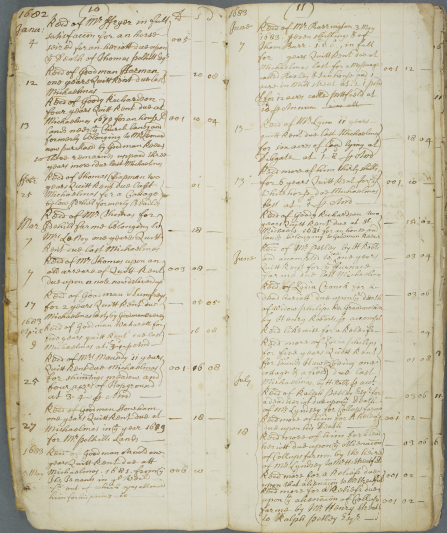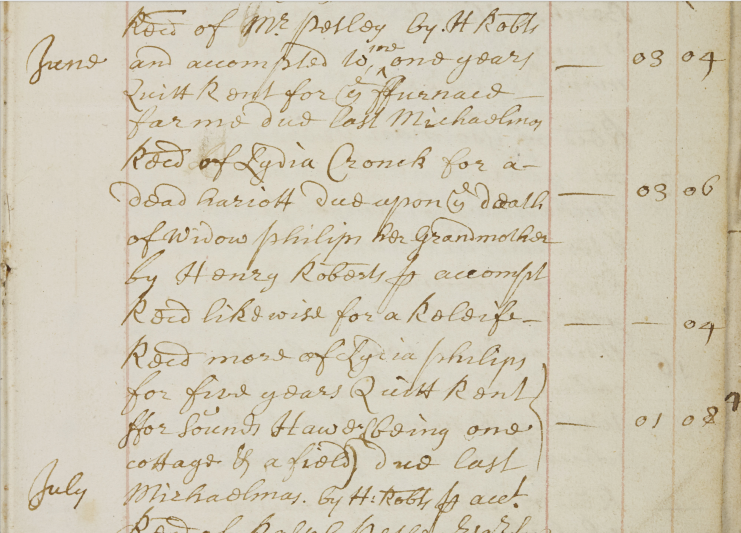Sarah Stanley ACR, Service Manager, writes: The Kent History and Library Centre has recently acquired a receipt book for the manor of Sundridge with the aid of a grant from the Friends of the National Libraries.
The volume’s title page describes it as ‘A booke of Receipts of all the Quitt rents, Heriotts, Aliena[c]ions, Reliefs, Amercements and other P[er]quisites belonging to the Mannour of Sundridge in the County of Kent’. The manor of Sundridge or Sundrish comprised the whole of the parish of Sundridge, most of the parish of Chiddingstone and part of the parish of Hever, and covered nearly 8,000 acres in all. The volume has sections for Sundridge Upland and Sundridge Weald which were separate manors by 15th century.
The earliest accounts, for 10 October 1677, record the collection of rents and estreats from tenants in the Weald. The last page in the volume, also relating to Weald, has the date 20 November 1714, but the book’s arrangement is not strictly chronological and the latest entry dates from 16 March 1717/18.
Sundridge manor was acquired by John Hyde (1611-1677) of Sundridge Place in about 1640. He was succeeded as lord of the manor by his nephew Humfrey Hyde (1636-1719) and the entries for 1680 include the receipt of £10 16s for three years’ quit rent due the previous Michaelmas “… by order of my Brother Sr B. [Bernard] Hyde…”.
The receipts relate to payments of quit rents, usually for periods of several years and in arrears, reliefs and heriots. By this date, many of the quit rents were clearly nominal, often no more than a shilling or two for several years’ rents. A heriot became due when a tenancy was transferred as well as on the death of a tenant and although it should have been the tenant’s most valuable animal a money payment could be taken instead. Often this was a fixed amount of 3s 6d, but there are also references to payments in lieu of specific animals, such as 4s for a ‘hog’ and £1 for a mare.
The volume will be of interest to both family and local historians and its entries are a rich source of both personal and place names. To cite just a few examples, in 1680 Robert Watts paid 3s 6d for seven years’ quit rent for a tenement called Jefferies which he had purchased from Widow Barr of Bromley and in 1683 Lydia Cronck paid 3s 6d for a heriot, 4d for a relief and 1s 9d for outstanding quit rents for “Sounds Hawe (being one cottage & a field)” which she had inherited from Widow Philips, her grandmother. Also in 1683, Mr Lynn paid £1 10s for six years’ quit rent for the White Horse public house. There are several other entries for the White Horse, including a reference to the manor court being held there in 1717.
The Kent History and Library Centre already had a transcript of the entries for 1677-1690 (TR3917/1) but this volume is a valuable addition to our holdings.

